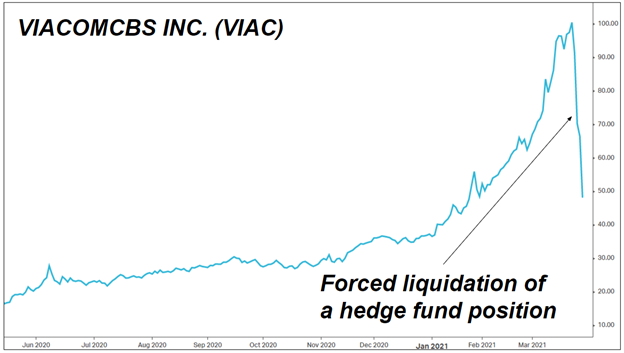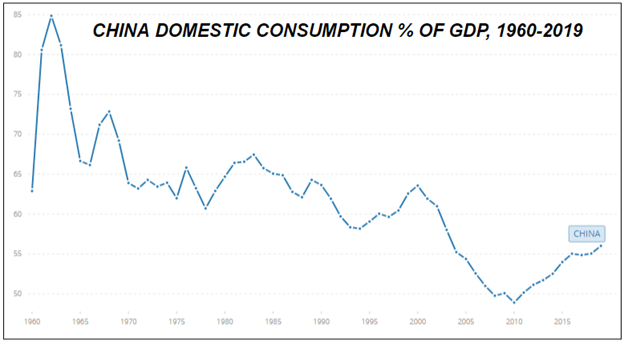Bitcoin continues to follow its own narrative, and the broader cryptocurrency space along with it.
(We note with amusement that, at the time of this writing, Bitcoin continues to press against all-time highs in the $60,000 area, even as tech stocks turn red and the broader market finds itself gripped by a new market structure event — the fallout from which is not over yet.)
Bitcoin’s increasing ability to ignore market-moving headlines of the bearish variety comes not because crypto-oriented investors are out to lunch, or otherwise not paying attention.
It comes because crypto assets are in the knee of the curve with respect to broad-based adoption, as they transform the buttoned-down global finance space from the inside out. That positioning translates to a rising tide of demand that overpowers other considerations.
The “knee of the curve” — also sometimes known as the “elbow of the curve” — is a mathematical term referring to the point where an accelerating parabolic curve starts to go vertical.
Or if you picture the shape of a hockey stick, standing upright with its forward tip resting on the ice, the knee of the curve would be the point at which the functional part of the stick, which is meant to meet the puck, connects with the handle of the stick, which goes up at a near-vertical angle.
“Knee of the curve” as a term was popularized a ways back in relation to the prolific inventor, scientist, and futurist Ray Kurzweil, and his predictions relating to the coming Singularity.
For those who believe in Kurzweil’s theory (we are skeptical), there will come a point where the exponential gains born of compounded computing power will unleash not just artificial intelligence, but some form of silicon-based hyper-intelligence or super-intelligence.
After this happens, according to Kurzweil’s view, humanity as a species will more or less merge with machines and effectively become immortal.
We’re not holding our breath on that one, though the Singularity is supposed to be near (as declared in the title of Kurzweil’s most popular book). The knee of the curve for super-intelligence is still far away, in our view, and may not show up in this century — if it even arrives at all.
In contrast to that, the knee of the curve for crypto asset adoption is already present, right here and right now. It is grabbing headlines and staring us in the face.
Consider the following announcement via Business Wire:
Visa Becomes First Major Payments Network to Settle Transactions in USD Coin (USDC)
Visa (NYSE: V) today announced a major industry first in bridging the worlds of digital and traditional fiat currencies: the use of USD Coin (USDC), a stablecoin backed by the U.S. dollar, to settle a transaction with Visa over Ethereum—one of the most actively used open-source blockchains…
Visa has spent the last year establishing a pathway for digital currency settlement within Visa’s existing treasury infrastructure, a platform that moves billions of dollars each day across thousands of institutions in more than 200 markets and 160 currencies.
Visa — one of the largest payment processors in the world — is opening up an eight-lane superhighway for fast, seamless, fiat-to-crypto transactions and vice versa.
What’s more, when one big player does it, they all have to do it. Mastercard, which has embraced its own suite of cryptocurrency initiatives, will surely follow Visa with some form of stablecoin transaction enablement.
Then, too, the credit card payment giants are doing this, in part, because they are terrified of Silicon Valley challengers like PayPal and Square taking their market share via crypto asset payment rails.
The traditional banks are looking on, too, and feeling a mix of intense pressure and existential dread. If a crypto asset payment revolution takes hold without them, traditional banks risk going the way of buggy whip manufacturers in the aftermath of Henry Ford’s assembly line.
Here is another headline that recently caught our eye, via Bitcoin.com:
The Fed Plans to Unveil Digital Dollar Prototypes in July
The U.S. Federal Reserve has been actively working on a central bank digital currency (CBDC). At least two prototypes of a digital dollar are near completion, developed by officials at the Federal Reserve Bank of Boston and the Massachusetts Institute of Technology (MIT). They plan to unveil their research as soon as July, said James Cunha, who leads the project for the Boston Fed…
Even the Federal Reserve — along with many other global central banks — understands that the crypto asset revolution is something to join rather than fight.
The arrival of central bank digital currencies will not pose a threat to Bitcoin, meanwhile, because Bitcoin is digital gold, and CBDCs will be fiat currency in digital form.
The supply of Bitcoin will remain forever capped, whereas the supply of digital dollars will remain open-ended; as such, it will make more sense than ever, in a digital-dollar world, to use BTC as a store of value — and a means of protecting savings — while switching to digital dollars for the purpose of paying taxes, or otherwise conducting transactions that require the use of a digital fiat asset.
Meanwhile, the reason Visa has chosen to settle transactions in USD Coin (a popular dollar-backed stablecoin) is because dollar-denominated stablecoins are essentially normal dollars wrapped in code, allowing them to migrate onto the blockchain.
Imagine the traditional fiat banking system and the newly developing crypto system as separate entities that are not compatible at first glance. What is needed is a bridge, or perhaps a super-highway, between the two systems: A way to go instantly and seamlessly from fiat to crypto and back again.
This is what Visa, and other payment processing giants, will potentially provide by way of stablecoin transaction mechanisms.
Dollar-denominated stablecoins are tradable on most crypto exchanges; that, in turn, means the vast majority of crypto assets will be two steps away from payment in any form of end currency.
First you swap the crypto asset for USD stablecoin, a process that is instant; second, you use the USD stablecoin to complete whatever transaction is at hand. That’s it.
Americans who travel abroad have long been used to the instant fungibility and universal fiat access provided by credit cards. If an American uses their Visa or Mastercard to pay for lunch at a cafe in Europe, a currency transaction will take place instantly and seamlessly behind the scenes, and will likely be executed at the most favorable exchange rate available (the bank’s own bulk exchange rate).
With Visa offering stablecoin conversion, we are reaching the point where crypto assets achieve the same level of fungibility and instant swapability at the point of payment for a transaction.
That, in turn, means consumers will be able to hold their savings in whatever form of base asset they want — be it fiat or crypto — and then swap a portion of assets into whatever transaction currency is required instantaneously, at the touch of a smartphone screen or swipe of a card, with no effort, while knowing the payment rails facilitator is giving them the best exchange rate in the moment.
This transition to widespread crypto asset accessibility — which is happening so fast it should make your head spin — is the “knee of the curve” we are talking about in terms of the crypto asset revolution transforming the global finance system from the inside out.
Two or three years back, when the crypto space was still dominated by wild-eyed libertarian notions of blowing up the system or taking it head on, we explained patiently and thoroughly why the crypto revolution would go a different way: It was always bound to be more of a Trojan Horse-type deal than a direct head-on assault, working within the functional parameters of the system to introduce radical change gradually at first, and then suddenly.
At this point, the crypto Trojan Horse has penetrated the fiat castle walls; the revolution is here, and accelerating, and close to changing everything.








